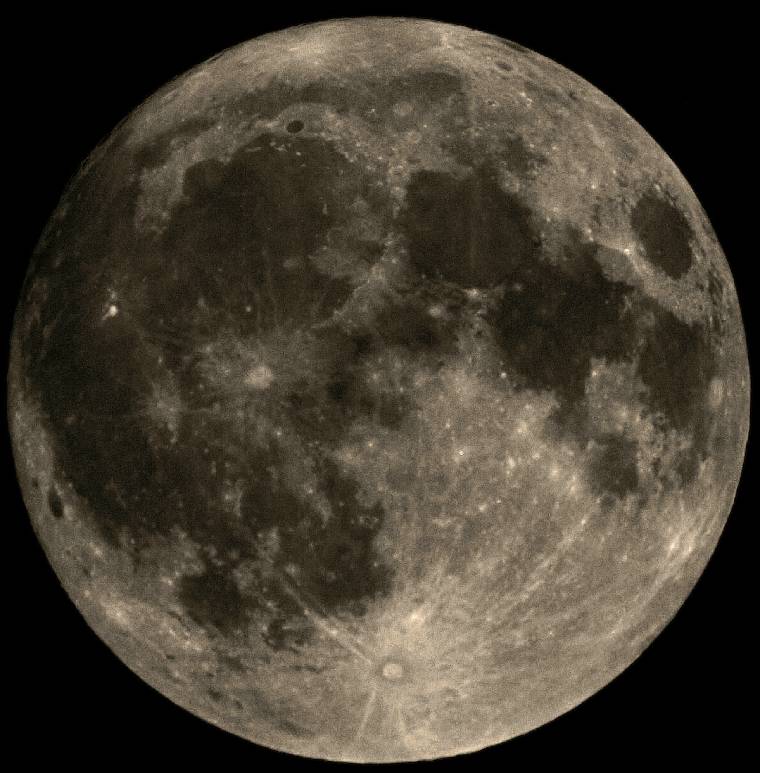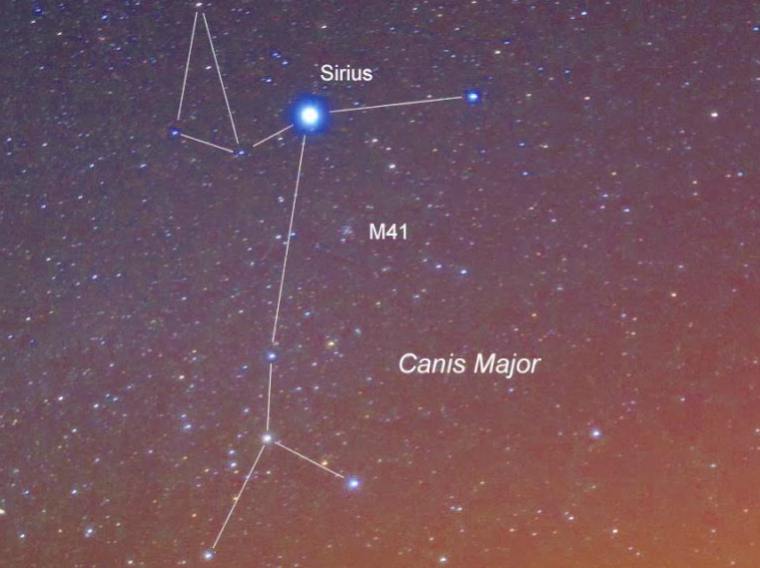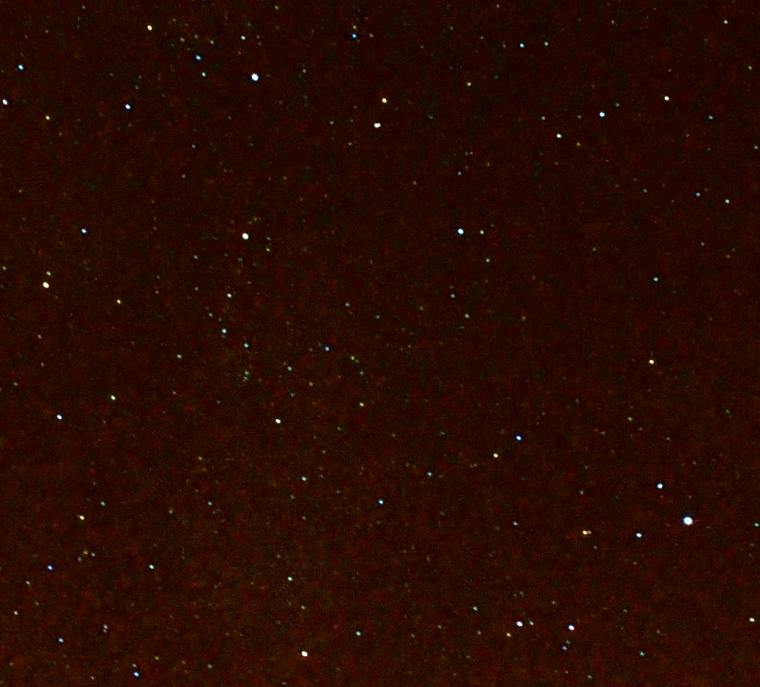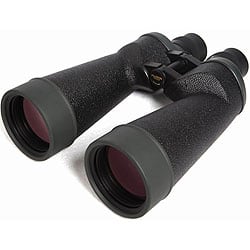Cosmic Distances – Binocular Astronomy

This guide to cosmic distances and how it relates to viewing the night skies using your binoculars was written by Philip Pugh and is part of his binocular astronomy series written for BBR:
If you have used binoculars for wildlife watching or other terrestrial use, you tend to think that a quarter of a mile or 400 meters is a long distance. If you focus your binoculars on a closer object, say 50 yards, then look at another object further away, you will need to adjust your focus.
Anything further in the distance on land or an airplane flying at over 35 000 feet and your focus becomes effectively “infinite”. Our instinct would suggest that if we focus on an airplane, then move to the Moon that we will need to adjust focus.
In practice, any focus adjustment needed is minimal, as both the Moon are at “infinite” focus. If you have used a DSLR camera with manual focus, it works in the same way. All objects, whether on Earth or in the sky are at infinite focus, once distances become miles or kilometers, rather than yards or meters.
Achieving focus with objects in the sky takes some practice, especially if you do not use a tripod. It is easier with small, light binoculars with low magnification (say 8x or less) than heavy binoculars with higher magnification (15x or more). It is simply an issue of keeping the binoculars still. Another problem I have noticed is that it is harder to keep binoculars still when I am looking at objects higher in the sky. If I am observing the Moon during daylight, dawn or dusk, I often look for a terrestrial object as far away as possible. This enables me to adjust the focus before trying the Moon. Sometimes I have found the infinite focus and other times, I need to make minor adjustments.
Pro Tip:
Here a good set of binoculars can make the difference. What you are looking for is one that has a smooth focus wheel action which will enable you to make the minute changes. Also, very important is one that has low geared focusing mechanism as this can really help with those fine focus adjustments:
Many binoculars will have a gearing for the focusing wheel that results in it taking less than a full turn of that wheel to go from minimum focus to infinity. This is good for making large focus adjustments quickly. So on for general use, this is an advantage as you can very quickly go from viewing birds on your feeder to observing an eagle or even airplane above.
However, it does make fine tuning the focus more difficult. So for uses where you are often making very small focus adjustments, a low geared mechanism, and one that takes two turns or more of the wheel is something to look out for when choosing the best binoculars for astronomy.

The Moon
Whilst some small “space rocks” can come closer to Earth than the Moon, it is not a regular occurrence and most of them are too faint to be seen in binoculars. Sometimes satellites and spacecraft can be seen in Earth orbit. For example, the International Space Station usually orbits the Earth at a height of about 300 miles (500 km). Under normal circumstances, the nearest natural object in space that comes closest is the Moon. This is a quarter of a million miles away, on average. If you fly around Earth on an airplane, it normally takes about 48 hours for a commercial airliner. The Moon is ten times further away than that, so would take about 20 days to reach at airliner speed or about 200 days by car! Although this is counter-intuitive, perfect focus on the Moon is achieved when it is at its smallest, as seen through binoculars.
More: Guide to Viewing The Moon With Binoculars
Venus
 At its closest, Venus can pass 25 million miles away from us, about ten times the Earth-Moon distance. Although Venus is noticeably larger than the Moon, it appears much smaller due to the distance. Note that you can only see the phases of Venus through binoculars and its surface is permanently shrouded in thick cloud.
At its closest, Venus can pass 25 million miles away from us, about ten times the Earth-Moon distance. Although Venus is noticeably larger than the Moon, it appears much smaller due to the distance. Note that you can only see the phases of Venus through binoculars and its surface is permanently shrouded in thick cloud.
The furthest object in our solar system that you can see in binoculars is Neptune, with a magnitude of 7.9, at an average distance of 4, 500 million kilometers (2,800 million miles). At this distance, you cannot see a planetary disc with binoculars and it appears as a pale blue dot, usually indistinguishable from many stars.
More: Guide to Viewing The Planets in our Solar System with Binoculars
Astronomical Units
As these numbers are large, it is normal for astronomers to measure distances in the solar system in astronomical units (AU), where 1 AU is the average Earth-Sun distance (about 93 million miles).
At the time of writing, many small objects were being discovered at distances up to 200 AU from us. The exact boundary of our solar system is not known but is widely believed to be about 63 000 AU or about 6 million million miles from us in a region known as the Oort Cloud.
Light Years
Once we leave the solar system, we use another measurement – the light year. A light-year is the distance that light travels in a year and just happens to be about 63 000 AU, or the suspected radius of our solar system.
Objects in the Oort Cloud are difficult to spot, even with large, professional telescopes, as they are very faint. The influence of the Sun’s gravity on the Oort Cloud is very weak and nearby stars have a gravitational influence, too.
The nearest star is Proxima Centauri, a faint red dwarf star that is even too faint to see in binoculars.
Our galaxy is full of red dwarf stars and none of them can be seen in binoculars. Proxima Centauri is in a triple-star system. Its partners are visible to our unaided eyes as Alpha Centauri, a single, bright star visible from the Tropic of Cancer and further south. Large binoculars, with high magnifications, show it as a double star, with components of magnitudes 0.0 and 1.2. Read my guide to Brightness and Magnitude with binoculars here if this number does not mean anything to you.

Sirius – the Dog Star
The nearest star that can be seen from north of the Tropic of Cancer also happens to be one of, if not the brightest star in the sky. Sirius, with a magnitude of -1.46.
It is in the constellation of Canis Major (the great dog) and is also known as the Dog Star. It is 8 light years away. The photograph above shows where it can be found in the Canis Major constellation.

Cygnus and Lyra
The above photograph shows the constellations of Cygnus and Lyra. The bright star near the bottom right is Vega at 26 light years away and magnitude 0.04. Deneb near the top left is fainter at magnitude 1.6 but is a very bright, massive star 1 600 light years away.
Andromeda Grand Spiral Galaxy
The furthest object that you can see with small binoculars is the Andromeda Galaxy at about 2.7 million light years. I have heard authentic reports about people seeing galaxies in the Virgo Supercluster, about 60 million light-years away, with 10x50 binoculars. Personally, I have never managed it in my binoculars but I have seen galaxies in the constellation of Leo at a similar distance.
However, even 60 million light years is a tiny distance compared to the size of the universe, which is at least 13 800 million light years away and suspected by many scientists to be three times that size! That is no less than 82 800 million million million miles!
More
This guide is part of a series written for Best Binocular Reviews by Philip Pugh, which if you are interested in astronomy in general and binocular astronomy in particular, I highly suggest you take time to explore. I also have many other astronomy related guides on BBR which you may also wish to go through:
Guide to Choosing the Best Binoculars for Astronomy
Guide to Using Binoculars for Astronomy by Philip Pugh
Best 10x50 Binoculars for Astronomy
About Philip Pugh:
Philip describes himself as an “uninteresting person who does interesting things”. He had his first magazine article published in 1980 and has published four books in Patrick Moore’s “Practical Astronomy” series including those shown below.
Like nearly all writers, he has a “day job” and has spent most of his working life as a trainer or technical author. These days, astronomy is his only active interest outside of work and family. He is best known for his interest in the Sun and one of his many activities is to monitor activity using binoculars (with suitable filters). He is also a keen photographer and takes quality photographs using inexpensive equipment.

 Article | Posted by Philip Pugh
Article | Posted by Philip Pugh 



 Categories:
Categories:  Tags:
Tags: 

